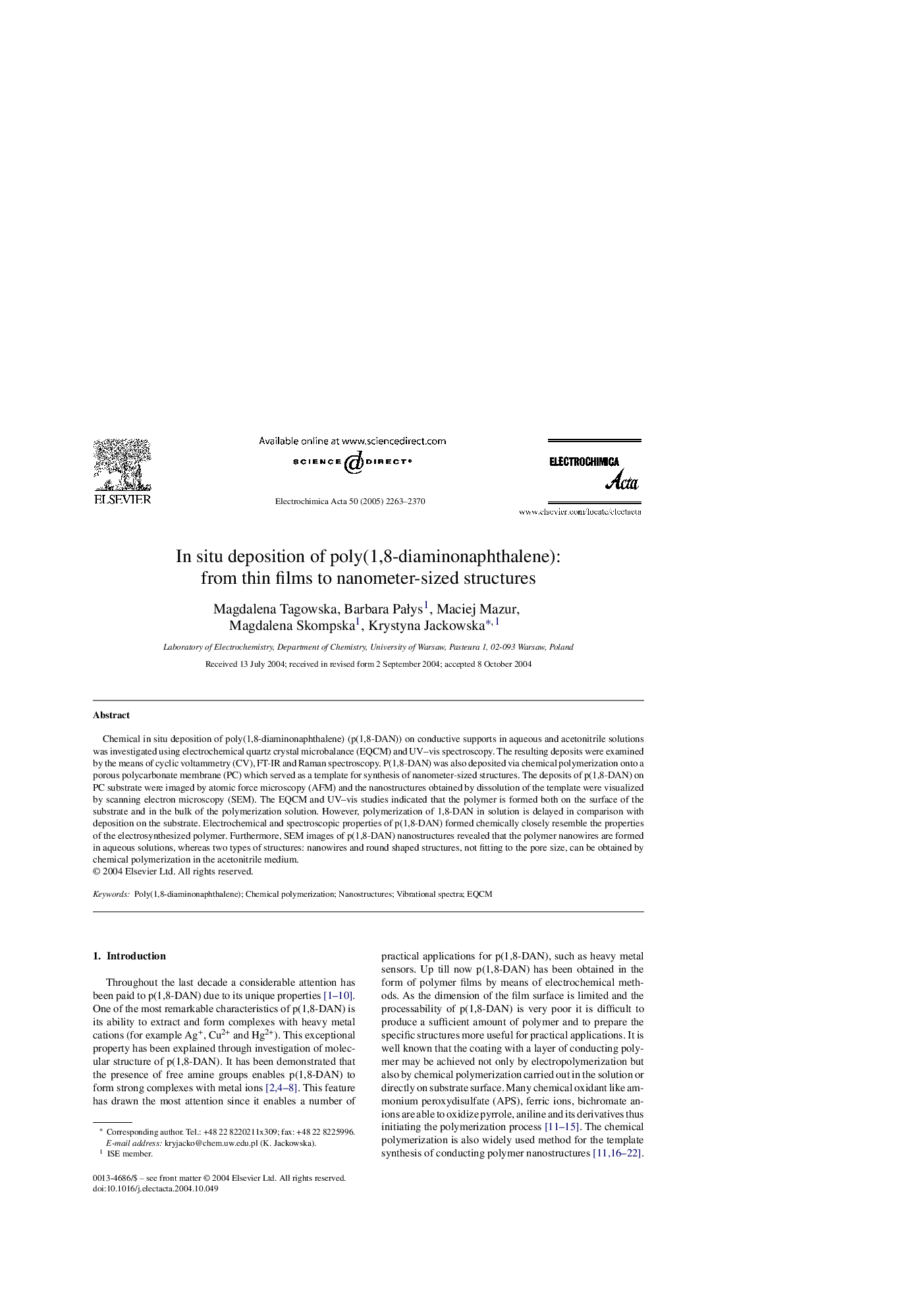| Article ID | Journal | Published Year | Pages | File Type |
|---|---|---|---|---|
| 196792 | Electrochimica Acta | 2005 | 8 Pages |
Chemical in situ deposition of poly(1,8-diaminonaphthalene) (p(1,8-DAN)) on conductive supports in aqueous and acetonitrile solutions was investigated using electrochemical quartz crystal microbalance (EQCM) and UV–vis spectroscopy. The resulting deposits were examined by the means of cyclic voltammetry (CV), FT-IR and Raman spectroscopy. P(1,8-DAN) was also deposited via chemical polymerization onto a porous polycarbonate membrane (PC) which served as a template for synthesis of nanometer-sized structures. The deposits of p(1,8-DAN) on PC substrate were imaged by atomic force microscopy (AFM) and the nanostructures obtained by dissolution of the template were visualized by scanning electron microscopy (SEM). The EQCM and UV–vis studies indicated that the polymer is formed both on the surface of the substrate and in the bulk of the polymerization solution. However, polymerization of 1,8-DAN in solution is delayed in comparison with deposition on the substrate. Electrochemical and spectroscopic properties of p(1,8-DAN) formed chemically closely resemble the properties of the electrosynthesized polymer. Furthermore, SEM images of p(1,8-DAN) nanostructures revealed that the polymer nanowires are formed in aqueous solutions, whereas two types of structures: nanowires and round shaped structures, not fitting to the pore size, can be obtained by chemical polymerization in the acetonitrile medium.
